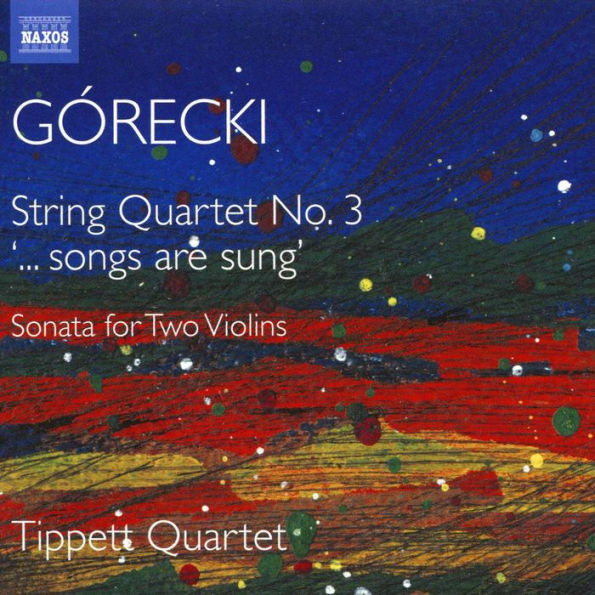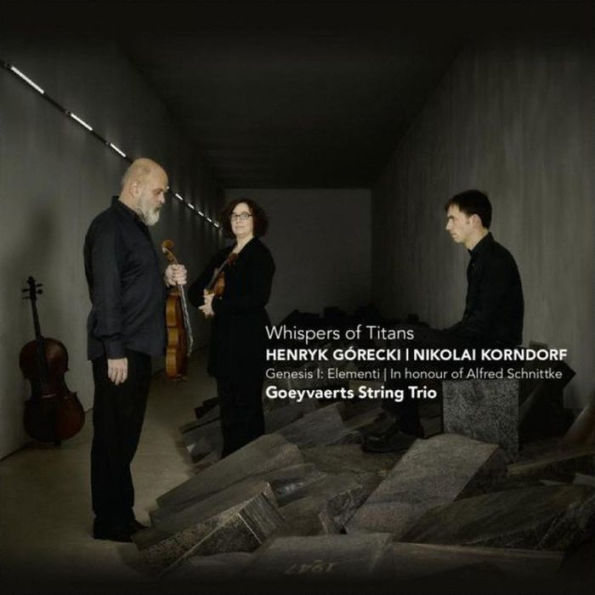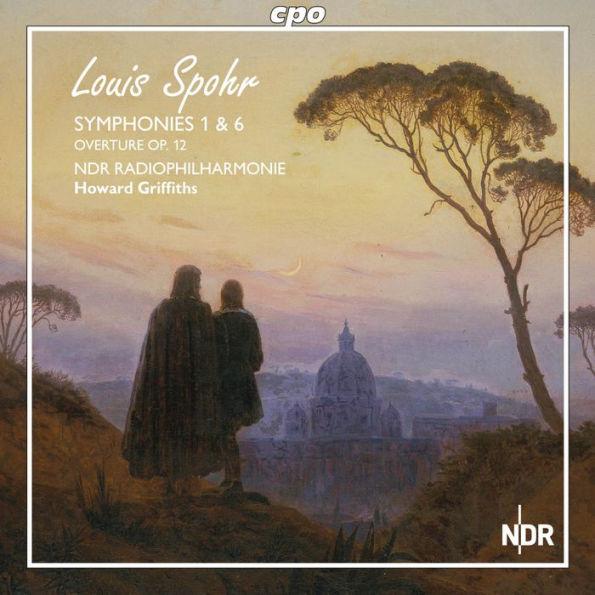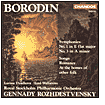Home
Henryk G¿¿recki: Symphony No. 3 "Symphony of Sorrowful Songs"
Barnes and Noble
Henryk G¿¿recki: Symphony No. 3 "Symphony of Sorrowful Songs"
Current price: $15.99
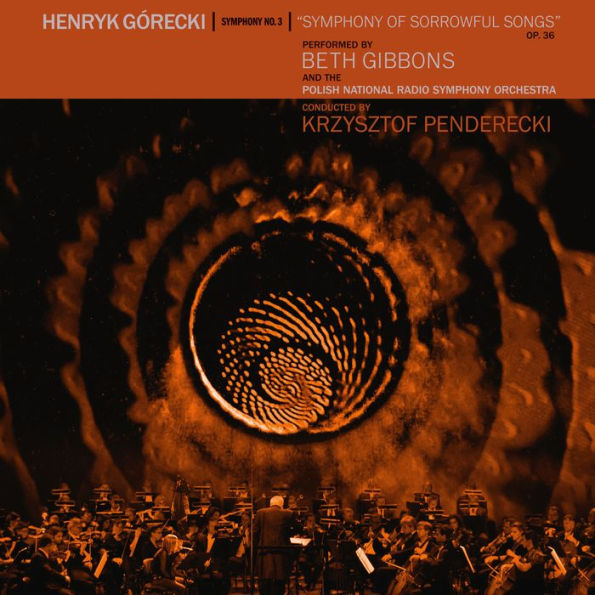

Barnes and Noble
Henryk G¿¿recki: Symphony No. 3 "Symphony of Sorrowful Songs"
Current price: $15.99
Size: CD
Loading Inventory...
*Product information may vary - to confirm product availability, pricing, shipping and return information please contact Barnes and Noble
Part of a remarkable 2014 project that united some of the greatest works by Polish composers with some of alternative music's most prominent artists,
Portishead
's
Beth Gibbons
joined the
the Polish National Radio Symphony Orchestra
and conductor
Krzysztof Penderecki
in a performance of
Henryk Gorecki: Symphony No. 3 "Symphony of Sorrowful Songs."
Though the symphony initially received a mixed response when it premiered in 1976 because it departed from the atonal avant-garde style of
Gorecki
's previous work, it ultimately became one of the most popular classical works in the late 20th and early 21st centuries. Given its history as a maverick artistic move, choosing someone other than a classically trained vocalist to perform the piece feels like a creative nod to its origins. To sing a part interpreted by great sopranos such as
Dawn Upshaw
, whose 1992 recording of the symphony with conductor
David Zinman
and the
London Sinfonietta
sold over a million copies,
Gibbons
worked with vocal coaches to master singing in Polish in a sustained soprano register (she's naturally a contralto). Her commitment pays off in a performance that is authentic to the spirit of the work and her own music.
Symphony No. 3
's slow, meditative compositions convey the profound grief of separated mothers and children, making
an inspired choice to approach the work from a different perspective. Over the years, the world-weariness and tremulous clarity of her voice have been a major part of
's power and on albums such as
Out of Season
, her 2002 collaboration with former
Talk Talk
bassist
Paul Webb
. Throughout
Henryk Gorecki: Symphony No. 3 "Symphony of Sorrowful Songs,"
she honors the work's humanity as well as its technical beauty. The effort to stay in her upper register subtly colors her performance, imbuing it with intensity and fragility. Though her voice is woven more sparingly into the symphony's first movement, "Lento -- Sostenuto tranquillo ma cantabile" (which is based on a 15th century folk song that portrays the Virgin Mary singing to Jesus as he dies on the cross), it's no less powerful than when she plays a more prominent role later in the work. On the second movement, "Lento e largo -- Tranquillissimo" (which was inspired by the words scratched into the walls of a German Gestapo prison by an 18-year-old girl),
' stunning high notes and vibrato add to its aching beauty. As the symphony closes with its third movement, "Lento -- Cantabile-semplice" (in which a mother searches and grieves for a son lost in battle), her performance takes listeners on an emotional journey that ranges from worry to poignant acknowledgment. As different as it is from anything else in her body of work,
Henryk Gorecki: Symphony No. 3 "Symphony of Sorrowful Songs"
is an affecting example of
' willingness to take her music in unexpected -- but ultimately winning -- directions. ~ Heather Phares
Portishead
's
Beth Gibbons
joined the
the Polish National Radio Symphony Orchestra
and conductor
Krzysztof Penderecki
in a performance of
Henryk Gorecki: Symphony No. 3 "Symphony of Sorrowful Songs."
Though the symphony initially received a mixed response when it premiered in 1976 because it departed from the atonal avant-garde style of
Gorecki
's previous work, it ultimately became one of the most popular classical works in the late 20th and early 21st centuries. Given its history as a maverick artistic move, choosing someone other than a classically trained vocalist to perform the piece feels like a creative nod to its origins. To sing a part interpreted by great sopranos such as
Dawn Upshaw
, whose 1992 recording of the symphony with conductor
David Zinman
and the
London Sinfonietta
sold over a million copies,
Gibbons
worked with vocal coaches to master singing in Polish in a sustained soprano register (she's naturally a contralto). Her commitment pays off in a performance that is authentic to the spirit of the work and her own music.
Symphony No. 3
's slow, meditative compositions convey the profound grief of separated mothers and children, making
an inspired choice to approach the work from a different perspective. Over the years, the world-weariness and tremulous clarity of her voice have been a major part of
's power and on albums such as
Out of Season
, her 2002 collaboration with former
Talk Talk
bassist
Paul Webb
. Throughout
Henryk Gorecki: Symphony No. 3 "Symphony of Sorrowful Songs,"
she honors the work's humanity as well as its technical beauty. The effort to stay in her upper register subtly colors her performance, imbuing it with intensity and fragility. Though her voice is woven more sparingly into the symphony's first movement, "Lento -- Sostenuto tranquillo ma cantabile" (which is based on a 15th century folk song that portrays the Virgin Mary singing to Jesus as he dies on the cross), it's no less powerful than when she plays a more prominent role later in the work. On the second movement, "Lento e largo -- Tranquillissimo" (which was inspired by the words scratched into the walls of a German Gestapo prison by an 18-year-old girl),
' stunning high notes and vibrato add to its aching beauty. As the symphony closes with its third movement, "Lento -- Cantabile-semplice" (in which a mother searches and grieves for a son lost in battle), her performance takes listeners on an emotional journey that ranges from worry to poignant acknowledgment. As different as it is from anything else in her body of work,
Henryk Gorecki: Symphony No. 3 "Symphony of Sorrowful Songs"
is an affecting example of
' willingness to take her music in unexpected -- but ultimately winning -- directions. ~ Heather Phares



